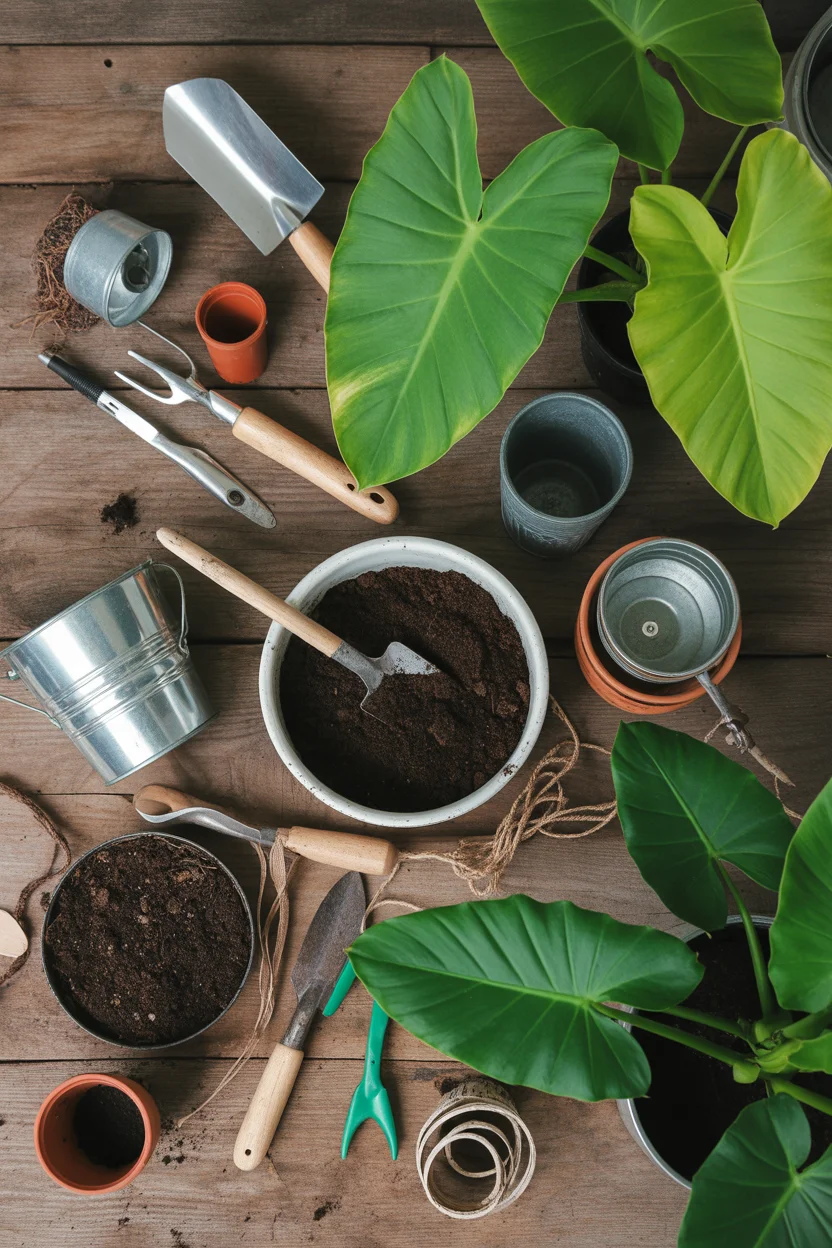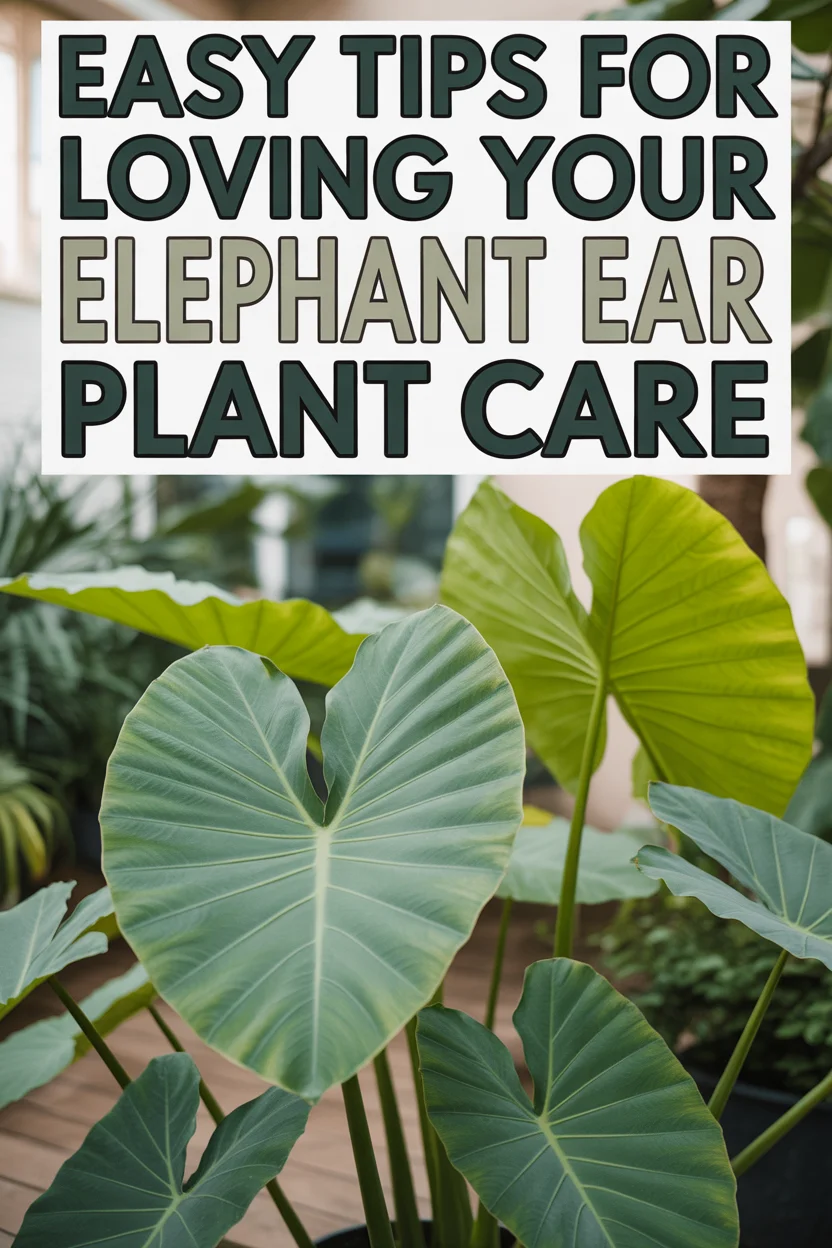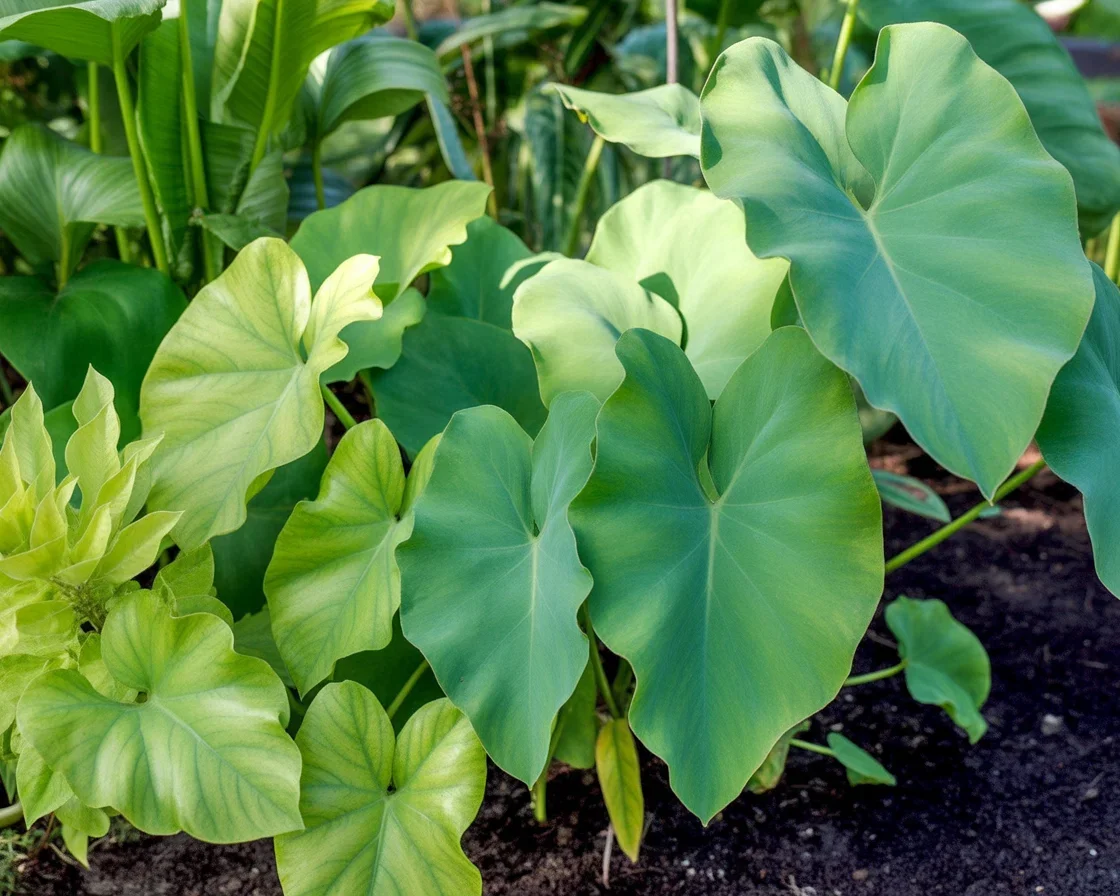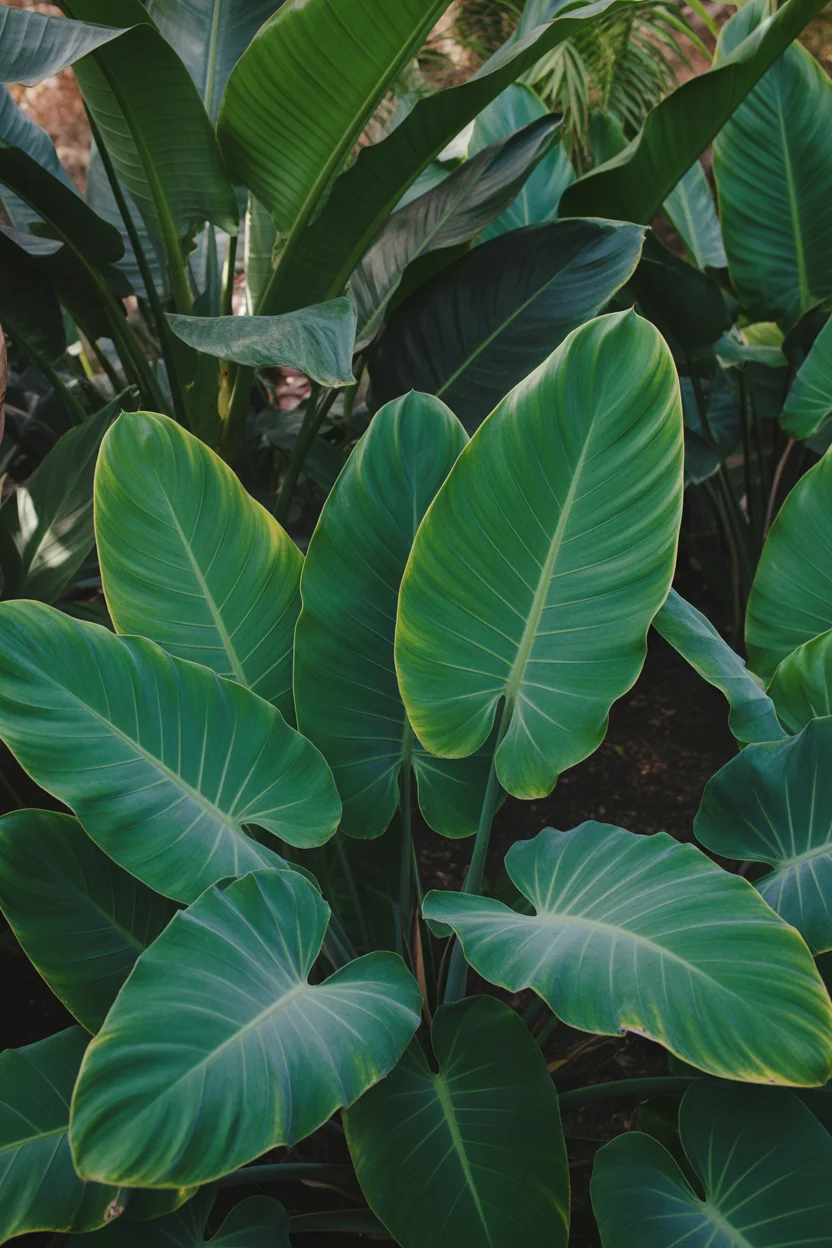Elephant ear plant care can be a real head-scratcher when those gorgeous big leaves start drooping for no reason or you spot brown edges out of nowhere. Been there—I mean my first one just… wilted. Poof, sad. But trust me, with a few simple tips you’ll have those tropical leaves bouncing back fast. If you’re like I was, doubting whether you’ve got a green thumb or not, you might also want to check out a few beginner plant wins like the Carmen Jane plant care easy guide or go for something totally different like the China Doll plant that’s also trending. Anyway. My goal here is simple—to make elephant ears a breeze for regular, not superhuman, plant folks.
Table of Contents
Elephant Ear Care
No hiding it: elephant ear care can be tricky at first. These plants LOVE drama, or maybe they’re just picky. Still, once you get a few basics down? Easy. They crave lots of water but absolutely hate soggy roots. Oh, and give them bright light but not too much direct sun or hello, toasted leaves. I’ll say. Sadly learned that the burnt crisp way.
One tip that saved my plant’s life (like, for real): big, wide pots. Elephant ear roots want room to stretch. Then, use a potting mix that drains well—don’t suffocate the poor thing. My local hardware store soil, honestly, worked fine but adding a bit of perlite made it chef’s kiss. Also, don’t let them dry out completely. If you touch the soil and it’s barely moist, grab that watering can.
Fertilizer? Oh yeah, they’re hungry. Once a month during spring and summer and dial it way back if winter gets chilly where you live. If you want awesome visuals on plant care basics, I actually loved the photos over at fun gardening for kids because they lay it out in plain English.
Types of Elephant Ears
So, here’s where things get fun. Not every elephant ear is the same. There’s Alocasia, Colocasia, and Xanthosoma. I always get them mixed up—half the time at the nursery I’m squinting at labels. Alocasia has kind of arrowhead leaves, more upright, and can be a little… persnickety indoors. Colocasia, that’s your classic heart-leaf, droopy look, and it loves to sprawl. Xanthosoma is a curveball, with huge leaves and wild colors.
Anyway, they’re ALL gorgeous but need mostly the same vibes: warmth, humidity, and a solid drink. My neighbor brags her Colocasia got as tall as her six-year-old. Still, probably easier for everyone to start with a common Alocasia Polly or Colocasia esculenta (those are beginner-friendly, I swear).
Common Problems With Elephant Ears
OK, let’s get real: elephant ears get moody. Yellow leaves, brown tips, spots, not growing—ugh, the drama. Most common? Too much water or not enough. Their roots love air but hate wet feet. Watch out for root rot, which is a nightmare. Leaves turning yellow pretty much means something’s off with water—either way too much or forgetting to water completely.
Spider mites can crash the party if your place is dry. If you blink and see patches of yellow speckling, grab your magnifying glass (or, you know, your phone). Oh, and if your plant seems stunted? Not enough fertilizer, or maybe it’s stuck in a shady spot. I messed that up once by putting my elephant ear in the darkest corner. Oops. I fixed it by moving it to a window area—huge difference.
| Problem | Likely Cause | Quick Fix | Extra Tip |
|---|---|---|---|
| Yellow Leaves | Overwatering | Let soil dry | Check pot drainage |
| Brown Edges | Low humidity | Mist occasionally | Try a pebble tray |
| Stunted Growth | Too little fertilizer | Feed monthly | Use balanced plant food |
My first elephant ear lost half its leaves in a week! After I switched to a chunky potting mix and moved it near the kitchen window, it perked up in a few days. The thing is huge now. Honestly, don’t panic if it looks rough at first!

How much light does my elephant ear plant need?
So, a little secret: elephant ear plants dig bright, indirect light. Direct South Texas midday sun? No way. My kitchen window does the trick because it gets filtered sun between noon and three. If your leaves fade to a dull, sad green or get bleachy spots, probably too much light.
But in a dark corner, expect dramatic, droopy leaves. Just take them for a walk (no joke, I move mine every season). You’ll notice fast if they’re happy or throwing a tantrum.
If you’re curious about more quirky lighting tricks, check out this guide on plant lighting and tough indoor plants at how to care for a fiddle leaf fig. Easy tips. Relatable.
Common elephant ear plant problems
First thing—don’t beat yourself up. It happens! These are the headaches nearly EVERYONE gets with elephant ears:
- Droopy leaves: Nine times out of ten, it’s water drama. Watered yesterday? It’s probably root rot.
- Brown edges: Not enough humidity; misting helps but don’t soak them.
- Yellowing: Overwatering strikes again, or your soil is way too heavy (fix that quick).
- Spots or powdery stuff: Might be spider mites or fungus—wipe the leaves clean and check for bugs.
Try not to obsess (says the person who definitely obsessed, whoops).
Do elephant ear plants need sun or shade?
Let’s clear this up: They want some sun, but not frying sun. Think dappled shade or bright, indirect rays. Direct light can be harsh and burn their leaves. However, if you have only a little sun, they’ll still grow, but maybe not as lush as in a jungle corner with lots of morning light.
I once put mine outside in July—biggest mistake ever. By the second day, the leaves looked like crispy potato chips. Learned that lesson fast. Nowadays, I keep them inside where I control how much sun they get, and they look ten times better. If you want an all-star option for low to medium light, by the way, the Goldfish plant care tips has saved me so much stress too.
How often should you water elephant ears?
So, let’s keep it super simple: water when the top inch of soil feels dry—don’t let it get crusty like week-old bread. Every three to four days for indoor plants, but more during summer. Outside? It gets wild, could be daily if it’s baking out.
I use the “poke-your-finger-in-the-pot” method. If it sticks a bit but isn’t mud? Time to water. Drought is not their friend, but neither is a muddy swamp. Try to find the sweet spot in between. Pro tip: humidity matters more than people think for elephant ear care. If your feet stick to the kitchen floor in July, your elephant ear is probably thrilled too.
Should you cut off elephant ear leaves?
Tough love time: yes, you should! Whenever you see dead, yellow, or ratty leaves, just prune them. Make a clean cut close to the base with disinfected scissors or shears. It keeps your plant healthy and lets all that energy go into new growth.
When new leaves unfurl, it feels like a mini victory—like winning a little plant lottery. Don’t panic if the old ones keep dying. That’s just your plant shifting focus. Keep the “cut it if it looks sad” rule in your back pocket.
FAQ about Elephant Ear Care
How Do I Keep My Elephant Ear Plant Happy?
Light: Bright, indirect light is ideal. Some varieties tolerate full sun outdoors, but indoors they prefer filtered light.
Watering: Keep the soil consistently moist but not soggy. Water when the top inch of soil feels dry.
Humidity: High humidity (50% or more) keeps the leaves lush. Mist the leaves or use a humidifier indoors.
Fertilizer: Feed with a balanced liquid fertilizer every 2–3 weeks during the growing season (spring to early fall).
Temperature: Elephant ears thrive in warm temps between 65–85°F (18–29°C). Protect them from cold drafts or frost.
Do Elephant Ear Plants Like Coffee Grounds?
Used coffee grounds can be beneficial in small amounts:
They add nitrogen, improve drainage, and slightly acidify the soil—good for elephant ears.
Mix coffee grounds into compost or top-dress your soil lightly.
Avoid overuse, as too much can lead to soil acidity and mold.
What Do Overwatered Elephant Ears Look Like?
Yellowing leaves
Soft, mushy stems or base
Wilting despite wet soil
Foul smell from soil (root rot)
Brown spots or mold growth
If you suspect overwatering:
Let the soil dry slightly.
Remove affected leaves.
Consider repotting with fresh, dry soil.
How to Make an Elephant’s Ears Thrive
Use rich, well-draining soil (loamy with added compost).
Provide space: These plants can grow quite large; ensure they aren’t crowded.
Repot when rootbound: Every 1–2 years, move to a slightly larger container.
Remove dead or yellowing leaves to promote new growth.
Outdoors, mulch around the base to retain moisture.
Give Elephant Ears a Try—You Got This
There you have it. Elephant ear care always felt fussy to me at first, but once you learn their quirks, they’re dramatic in the best way. Remember: wide pots, filtered light, don’t drown the roots, and cut those old leaves. If you want more in-depth, knowledgeable takes, How to Grow and Care for Elephant Ear Plants is gold. Fancy more plant adventures? Read up on lucky bamboo plant care or go green with indoor bamboo tips for some super easy wow-factor greenery, too. Don’t be afraid to start with a small pot and let your plants teach you—mine have, for better or worse. Seriously, try it and see just how bold your home can look. 

